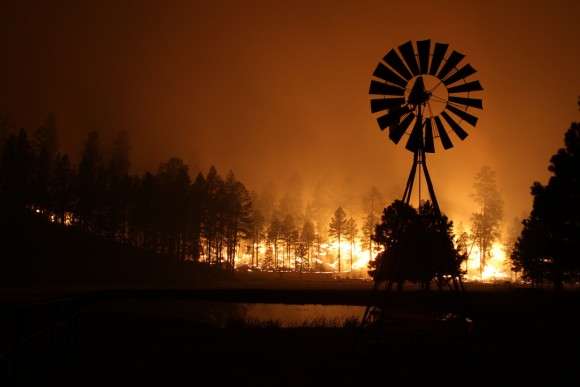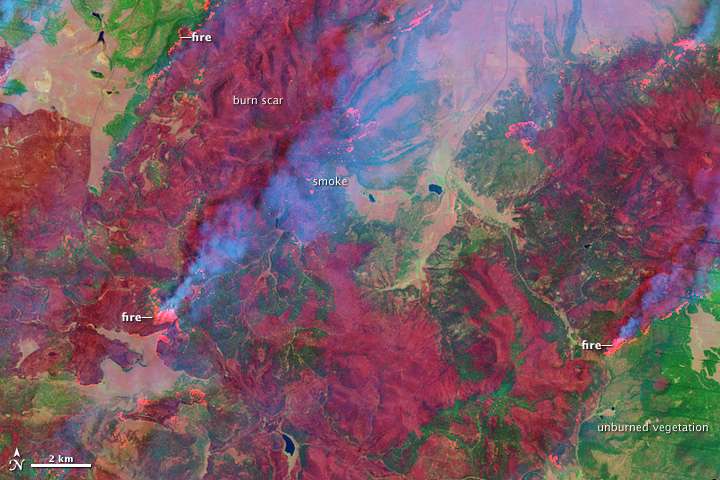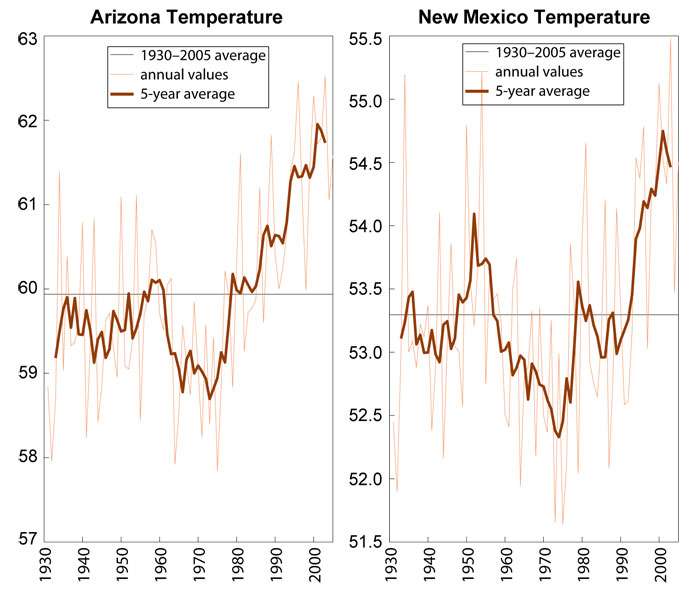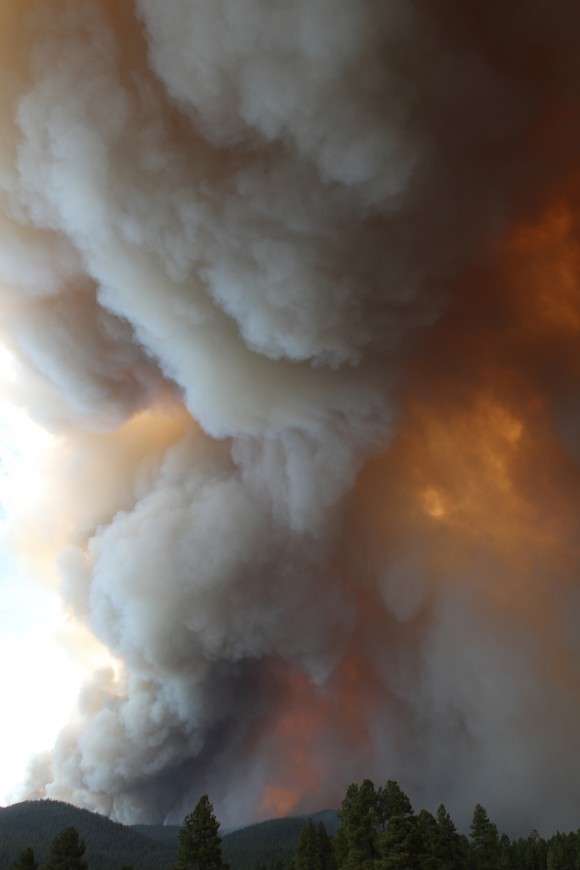 Image credit: U.S. Forest Service
Image credit: U.S. Forest Service
President Obama has promised the people of Arizona that the federal government will provide all federal resources necessary to fight the fires in Arizona. The Wallow fire has become the second largest fire in Arizona's history at approximately 400,000 acres and growing. Because it is 0% contained and most of its margins are in rugged mountainous terrain in Arizona's White Mountains, it could become the largest fire in Arizona's history if the forecasts for extreme fire weather this weekend by the National Weather Service verify. A huge area of biodiverse rugged wilderness has been charred, but damage to structures has been limited by firefighters hard work.
(Posted June 9, 2011, at 11:45 a.m.) Governor Jan Brewer spoke with President Obama this morning regarding the devastating wildfires raging in Arizona. The President voiced his concerns for the residents of the areas affected by the wildfires and promised to provide as much federal support as needed to protect life, limb and property.“The President pledged to provide all federal resources necessary to the state of Arizona in the battle to contain the wildfires raging throughout the state,” said Governor Brewer. “The fires are a top federal responsibility and I was assured he will do everything in his power to guarantee Arizona has federal assistance in the continued fight to protect our state from this disaster.”
 Image credit: NASA
Image credit: NASA
An oasis of green in the desert southwest, the Apache National Forest covers the mountains due east of Phoenix and spills across the border with New Mexico. In late May and early June 2011, the island of forest became fuel for one of the largest fires in Arizona history, the Wallow Fire. This image, taken by the Landsat-7 satellite on June 7, shows the northern edge of the fire.
The image was made with infrared light. Bright red spots are actively burning areas, and darker red areas are freshly burned ground. Unburned forest and grassland is green, while sparsely planted earth or bare ground is pale pink. In many places, the fire has burned right to the edge of the forest. The image shows that the fire is intense: It has thoroughly burned the forest leaving few ribbons or patches of green in its wake.
As of June 8, the Wallow Fire had burned 389,000 acres (608 square miles) and was completely uncontained. Several communities have been evacuated, and the Apache National Forest is closed to the public. The Wallow Fire started on May 29, 2011.
The fire fighters and President Obama deserve credit for protecting people and property, but according to NASA scientists (and many other scientists in other studies) climate change is causing the number and severity of fires to increase in the western U.S.
The only reliable way to stop the amount of fire damage from increasing is to cut the levels of greenhouse gases that are causing the west to get warmer. Weather records show that Arizona and New Mexico, where the fires have been extreme this year, have warmed rapidly for the past thirty years.

According to NASA scientists rising temperatures, declining rainfall and increasing evaporation in the western states are parching forests, leading to more forest fires and more area burned across the western United States.
Over the past 30 years, warmer and drier conditions in the Rocky Mountain West have made vegetation more flammable, which has led to an increase in wildfires, said Peter Hildebrand, director of the earth sciences directorate at NASA’s Goddard Space Flight Center, speaking at the Conference on World Affairs at the University of Colorado this week.A new NASA wildfire model shows that these increasing fire trends are set to continue with a warming climate, Hildebrand said during the panel in Boulder.
As the earth heats up, global circulation patterns are changing and the winter storm track is being pushed further north. This results in less precipitation, higher temperatures and more evaporation in the Rocky Mountain West, Hildebrand explained.
NASA scientists project that with the effects of climate change, the frequency of fires in the West could increase between 30 and 60 percent by 2100.
